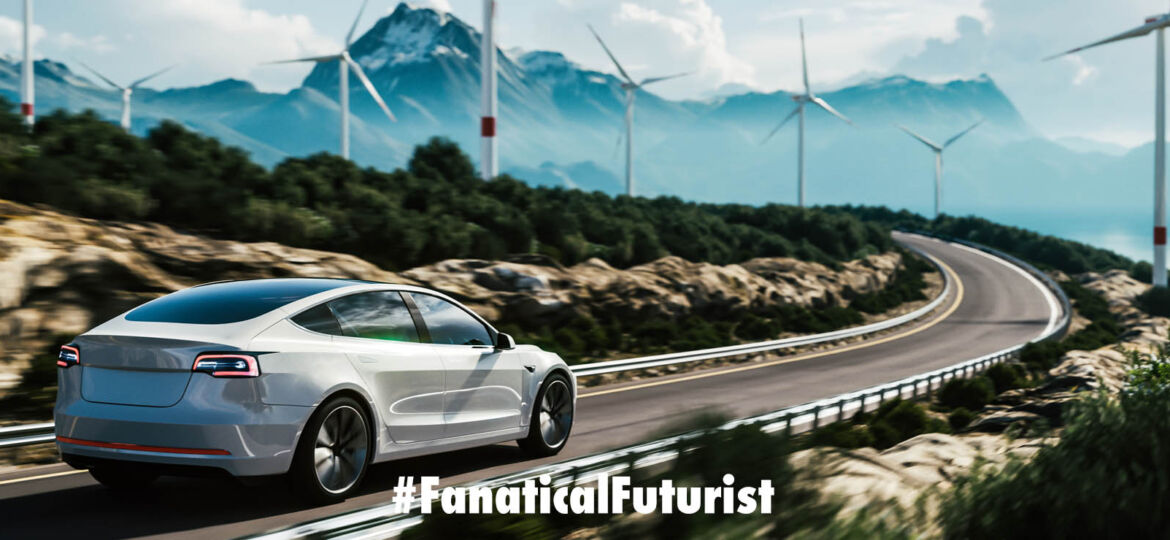
WHY THIS MATTERS IN BRIEF
Grid scale storage to balance the energy demands of grids requires massive investment, but what if consumers shouldered almost all of it?
 Love the Exponential Future? Join our XPotential Community, future proof yourself with courses from XPotential University, read about exponential tech and trends, connect, watch a keynote, or browse my blog.
Love the Exponential Future? Join our XPotential Community, future proof yourself with courses from XPotential University, read about exponential tech and trends, connect, watch a keynote, or browse my blog.
Boosting the role of renewables in our electricity supply will require a massive corresponding increase in Grid Scale Energy Storage. But new research suggests that electric vehicle batteries could meet short term storage demands by as soon as 2030.
While solar and wind are rapidly becoming the cheapest source of electricity in many parts of the world, their intermittency is still a significant problem. One potential solution is to use batteries to store energy for times when the sun doesn’t shine and the wind doesn’t blow, but building enough capacity to serve entire power grids would be enormously costly.
The Future of Energy, by keynote Matthew Griffin
That’s why people have suggested making use of the huge number of batteries being installed in the ever growing global fleet of electric vehicles, a trend often referred to as Vehicle to Grid (V2G). The idea is that when they’re not on the road, utilities could use these batteries to store excess energy and draw from it when demand spikes.
While there have been some early pilots, so far it has been unclear whether the idea really has legs. Now, a new economic analysis led by researchers at Leiden University in the Netherlands suggests that electric vehicle batteries could play a major role in grid-scale storage in the relatively near future.
There are two main ways that these batteries could aid the renewables transition, according to the team’s study published in Nature Communications. Firstly, so-called V2G technology could make it possible to do smart vehicle charging, only charging cars when power demand is low. It could also make it possible for vehicle owners to temporarily store electricity for utilities for a price.
But old car batteries could also make a significant contribution. Their capacity declines over repeated charge and discharge cycles, and batteries typically become unsuitable for use in electric vehicles by the time they drop to 70 to 80 percent of their original capacity. That’s because they can no longer hold enough power to make up for their added weight. Weight isn’t a problem for grid-scale storage though, so these car batteries can be repurposed as we’ve seen Mercedes do.
The researchers note that the Lithium-Ion batteries used in cars are probably only suitable for short-term storage of under four hours, but this accounts for most of the projected demand. So far though, there hasn’t been a comprehensive study of how large a contribution both current and retired electric vehicle batteries could play in the future of the grid.
To try and fill that gap, the researchers combined data on how many batteries are estimated to be produced over the coming years, how quickly batteries will degrade based on local conditions, and how electric vehicles are likely to be used in different countries—for instance, how many miles people drive in a day and how often they charge.
They found that the total available storage capacity from these two sources by 2050 was likely to be between 32 and 62 terawatt-hours. The authors note that this is significantly higher than the 3.4 to 19.2 terawatt-hours the world is predicted to need by 2050, according to the International Renewable Energy Agency and research group Storage Lab.
However, not every electric vehicle owner is likely to participate in vehicle-to-grid schemes and not all batteries will get repurposed at the end of their lives. So the researchers investigated how different participation rates would impact the ability of electric vehicle batteries to contribute to grid storage.
They found that to meet global demand by 2050, only between 12 and 43 percent of vehicle owners would need to take part in vehicle to grid schemes. If only half of secondhand batteries are used for grid storage, the required participation rates would drop to just 10 percent. In the most optimistic scenarios, electric vehicle batteries could meet demand by 2030.
Lots of factors will impact whether or not this could ever be achieved, including things like how quickly vehicle-to-grid infrastructure can be rolled out, how easy it is to convince vehicle owners to take part, and the economics of recycling car batteries at the end of their lives. The authors note that governments can and should play a role in incentivizing participation and mandating the reuse of old batteries.
But either way, the results suggest there may be a promising alternative to a costly and time-consuming rollout of dedicated grid storage. Electric vehicle owners may soon be doing their part for the environment twice over.
















